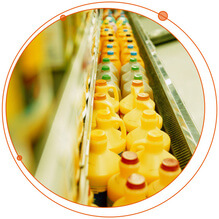 Whether you like it or not, the plastics industry is a growing market. According to an Allied Market Research report, it was valued at $15,179 million in 2015 and is projected to reach $18,538 million by 2022, growing at a CAGR of 2.9% from 2016 to 20221. Additionally, according to the report, in 2015, phthalates type held two-thirds of the global market in 2015. An important statistic since the use of various phthalates is restricted in many countries because of health concerns2.
Whether you like it or not, the plastics industry is a growing market. According to an Allied Market Research report, it was valued at $15,179 million in 2015 and is projected to reach $18,538 million by 2022, growing at a CAGR of 2.9% from 2016 to 20221. Additionally, according to the report, in 2015, phthalates type held two-thirds of the global market in 2015. An important statistic since the use of various phthalates is restricted in many countries because of health concerns2.
Phthalates Facts
Even so, phthalates are widely used industrial chemicals with an estimated annual production of over 8,000,000 tons. Phthalates are added to plastics to increases flexibility, transparency, and longevity. By weight, they contribute 10-60% of plastic products. Phthalates are used in a variety of products, including building materials (caulk, paint, adhesives), household products (vinyl upholstery, shower curtains, food containers and wrappers), and cosmetics3.
More importantly, “Bio-based plasticizers, such as epoxides and sebacates, are expected to grow at the highest CAGR throughout the analysis period, due to their remarkable properties such as non-toxic nature, high efficiency, improved heat stability, lower volatility, and others. These are employed in automotive, adhesive & sealants, paints and coatings, and other end uses.4
Tech Note Details
Knowing the global population is pushing back on the use of phthalates due to health concerns, the following tech note, Increasing Selectivity and Confidence in Detection when Analyzing Phthalates by LC-MS/MS, portrays a fast and sensitive LC-MS/MS method for the analysis of 22 phthalates in food. Phthalates can leach into food, especially hot or fatty ingredients, during manufacturing cross-contamination, or via food packaging5.
Therefore, fast and sensitive LC-MS/MS method was developed for the detection of 22 phthalates in food and beverage samples. After reading the tech note, you will learn MRM transitions, MRM3, EPI spectra, and SelexION Technology.
Alternatives for phthalates do exist, and according to the U.S. Environmental and Protective Agency (EPA) report, a European ban on some of these chemicals has led to the development of plasticizers based on isosorbide esters6. In addition to certain government bans, companies like Target want phthalates gone from baby, beauty, and cleaning products by 20207. Apple uses safer thermoplastic elastomers8 while Microsoft, Kaiser-Permanente, hospitals, and certain city operations use alternatives.Learn More About Food and Beverage Testing >
- http://www.digitaljournal.com/pr/3385574
- DIRECTIVE 2005/84/EC on ‘phthalates in toys and childcare articles’ 3 EPA ‘Phthalates Action Plan Summary’ 2010
- R.A. Rudel and L.A. Perovich: Atmospheric Environment 43 (2009) 170-181
- http://www.digitaljournal.com/pr/3385574
- https://www.niehs.nih.gov/research/supported/assets/docs/j_q/phthalates_the_everywhere_chemical_handout_508.pdf
- https://www.epa.gov/sites/production/files/2015-09/documents/phthalates_actionplan_revised_2012-03-14.pdf p. 3
- https://www.bizjournals.com/twincities/news/2017/01/26/target-wants-pfcs-phthalates-off-its-shelves.html
- https://www.apple.com/environment/safer-materials/






 Contact Support
Contact Support
0 Comments